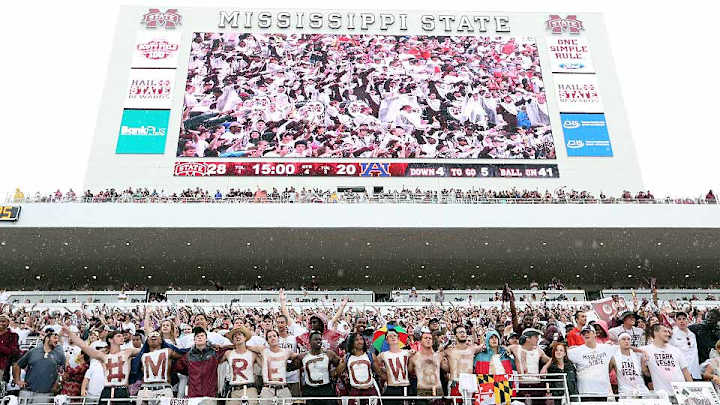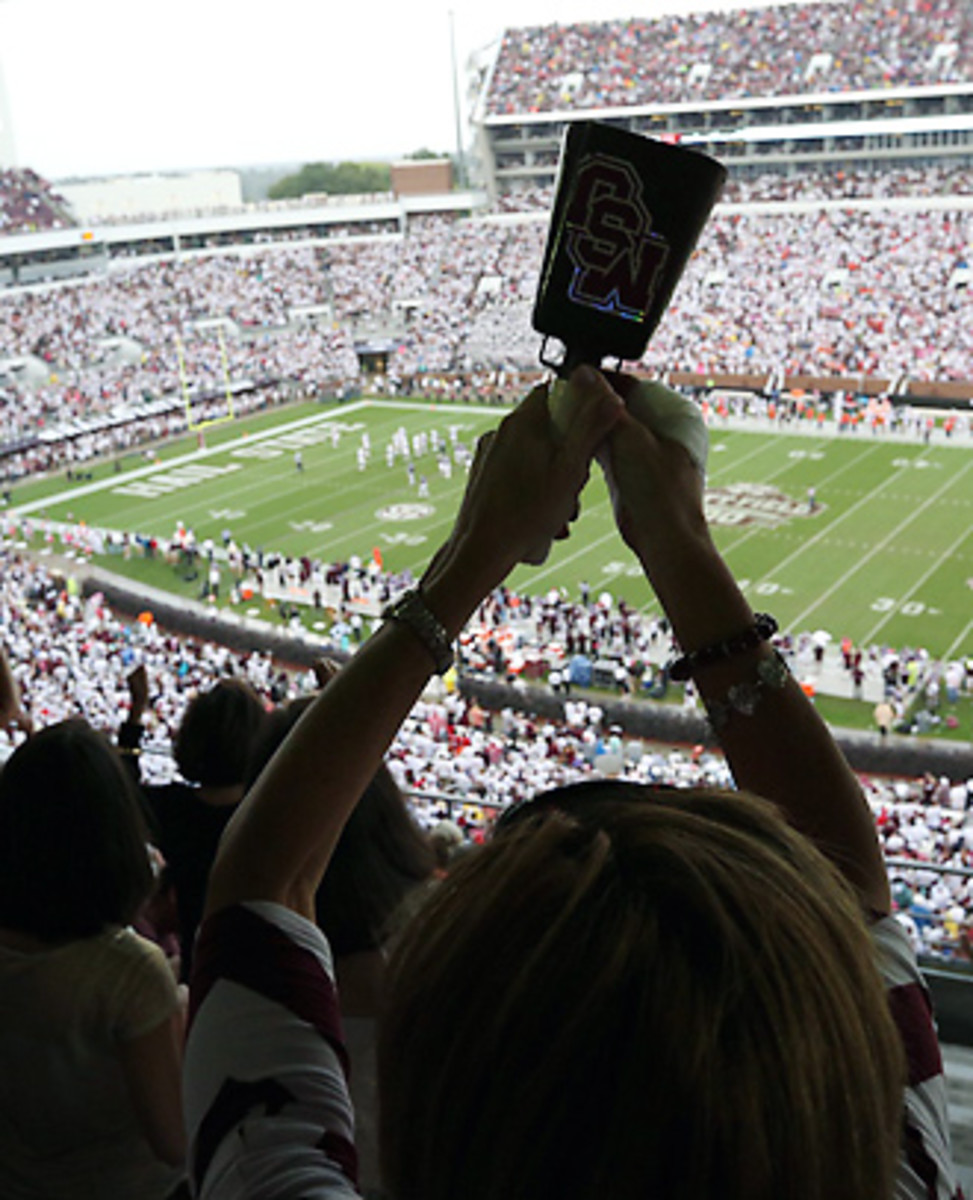Stadium Spotlight: Clanga's gotten louder at Miss. State's Davis Wade

One hundred years in, and Davis Wade Stadium has never sounded louder.
A renovation prior to this football season has Mississippi State celebrating 100 years of its football stadium with more than just wins. Sure, the Bulldogs have a spotless home record this season, but completely rebuilding the way fans interact within the stadium has given Davis Wade Stadium a new look. And sound.
Nate Appleman, 360 Architects’ project lead, tells SI.com the $75 million project gave Bulldogs fans new vantage points to get close to the action, created a dedicated sound-heavy end zone full of students and also took the strong tradition of tailgating and brought it inside the expanded 61,300-seat stadium.
“The tailgating they do there stuck out right away,” Appleman says. “People have been tailgating in the same place for years, and we wanted to capture that.”
• RICKMAN: Your TV guide to ultimate Week 13 Saturday
So, to move the Junction, the plot of land directly south of the stadium that fills with pop-up tents on Friday at 5 p.m., inside the stadium, crews renovated Davis Wade to include terraces on the scoreboard level that open up into a tailgating style. Another part of the fanfare of gameday is the team’s “Dawg Walk” through the Junction. Designers wanted that same feel inside the venue.
The rebuilt westside -- with a flattened concourse and new amenities -- complements the expanded north end zone, which features the Gridiron Club, a field-level club without seats. Any season-ticket holder, no matter where they sit, can add on an access fee to join the club and watch part or all of the game from the field.
• STAPLES: Wouldn't it be great if Miss. State were playing TCU instead?
“The kids would always go sing the alma matter to the students, now when they are coming down to the end zone to do it, they are slapping hands with people in the Gridiron,” Appleman says. “Everyone wants to pat the bowling ball (running back Josh Robinson) on the back or shake (quarterback Dak) Prescott’s hand. It is fun to see.”

We can’t talk Davis Wade without talking of cowbells, of course. Now that SEC rules have allowed the noisemakers back into the venue, Mississippi State wanted to take advantage of that noise and the roar of its student section.
Appleman says early in Dan Mullen's tenure, the coach wanted an improved student section, far better than the 2,000 bleacher seats that couldn’t hold all the students. “There was no intimidation factor to the building since both end zones were open,” Appleman says. “Mullen wanted a wall of people in that end zone. It gave them the opportunity to consolidate students into the end zone and make it tough to play out of. It really collects all the noise that comes from the fans and the cowbells into that area.”
That wall of humanity in over 8,000 north end zone seats -- a combination of students and premium seating make up the addition -- now gives Davis Wade a reinforced home-field advantage, something that didn't always exist throughout the stadium's 100-year history.
• STAPLES: #DearAndy, which Week 13 games have playoff implications?
Mississippi State relocated the stadium to its current site near the center of campus in 1914 but didn’t put permanent seating in place until adding a 3,000-capacity bleacher system on the west side in 1928. Concrete stands took shape in 1936 and slowly over the years new seating was added in chunks, but capacity was still below 41,000 in the late 1990s.
The most recent renovation boosted capacity and created new seating options, and under the careful eye of athletic director Scott Stricklin -- “I think he’s a bit of an architect at heart,” Appleman says -- the stadium also received a new brick and precast concrete exterior aesthetic to cover the “concrete brutalist” look and match newer buildings in the nearby athletic district.
One hundred years in and Davis Wade not only sounds better, but it looks better too.
Tim Newcomb covers stadiums, design and gear for Sports Illustrated. Follow him on Twitter at @tdnewcomb.
• STAFF: Week 13 picks: Who'll win this week's biggest games?
